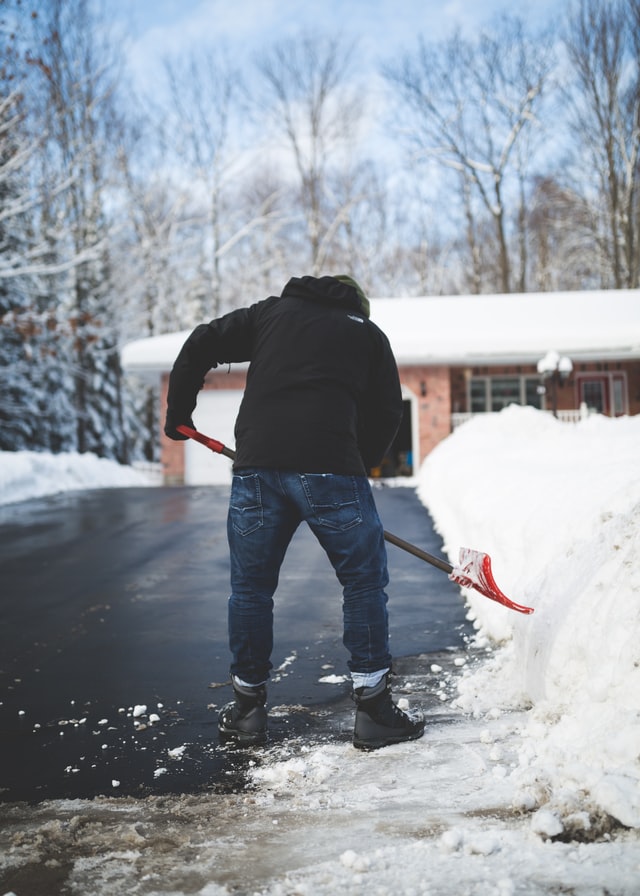By WIN Provider: Jeff Dill, Physiotherapist
It’s that time of year again. The temperatures drop, the days are short, and the ground is covered with the white stuff!
Although pleasing to the eye, that snow that’s falling may not be so comforting to your back when it’s time to shovel. As a physiotherapist, I usually see a handful of patients who come in complaining of low back pain typically brought on by, or made worse from, shovelling. So why does this happen, and what can you do to minimize your risk? First, let’s get a little bit into the physics and anatomy of it all.
In our backs we have many different muscles, but a group of them, called the “erector” muscles, run all the way from the tops of our hips up to the base of our skull. These muscles are aptly named because they keep us upright, or “erect.”
Now, to touch on the physics of shovelling, first try this (only if you are physically able to): grab something with a little bit of weight to it (a laundry detergent container, a purse, a weight, etc).
Next, stand up and hold the item close to your chest with your elbows bent. Now, straighten your elbows and hold it out in front of your body.
What do you notice?
You will likely feel the increased difficulty when holding it out away from your body.
This is because the “lever arm”- the distance from the axis of rotation (our shoulders in this example), and the weight – is longer, and a longer lever arm creates a larger force, or torque for our muscles to control. This torque will also be greater if we keep the same lever arm (ie our arms straight out) but use a heavier weight. So with this in mind, let’s think about shovelling.
When we shovel, the weight of the snow is far away from our body, just like in our prior example. As a result, this increases the “lever arm” and, thus, the stress on our erector, or back, muscles, which is why people can sometimes injure their backs when shovelling snow. So, what can we do to minimize this risk?
- When pushing the snow, stand behind the shovel and hold the handle around your mid-lower abdomen, as opposed to upper chest area.
- When preparing to scoop and lift the snow, hold the shovel lower down on the handle with your “bottom” hand. This will increase your own lever arm (distance between your two hands) and increase the leverage you can use to lift the snow.
- When lifting the snow, try to gently bend your knees, stand close to the “blade” of the shovel (where the snow is), and keep your back relatively upright.
- Keep smaller amounts of snow in the shovel when you go to lift it. You will have to take more “scoops” in total, but the strain on your back muscles with each scoop will be much less.
- If you have a large amount of snow to shovel, break it down into segments. For every 5-15’ you shovel, take a minute or two (or more, if needed) to rest to prevent your muscles from getting overly fatigued, because when our muscles are fatigued, they are more prone to becoming strained.
If you do happen to strain your back, physiotherapy can assist through a combination of manual therapy, corrective exercise, and modality-based treatments. Give WIN Health a call in Niagara Falls or Fonthill to arrange a visit with me and I would be happy to listen to your concern, offer treatment and get you back to living to your fullest this season.
Happy shovelling!


